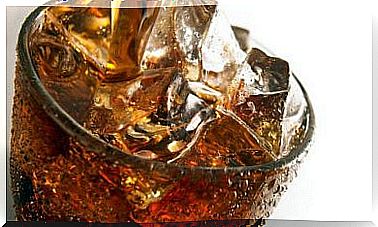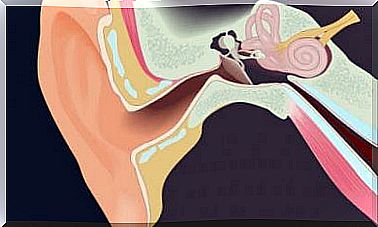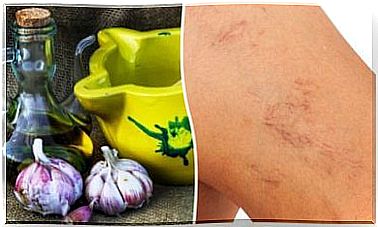The Different Types Of Scarring
The different types of scarring that can occur on the skin determine the final state of an injury. Want to know more about this mechanism? Here we’ll tell you everything you need to know about skin scars.

There are different types of skin scarring because not all injuries are the same. Different mechanisms of production of lesions lead to more or less deep wounds.
It is also important to take into account the layer of skin that has been affected because it consists of three layers: the epidermis, the dermis and the hypodermis or subcutis. The epidermis is the most superficial layer and in contact with the outside, while the hypodermis is the deepest, in contact with the inside of the body.
The middle layer of the skin is the dermis; it is capable of producing pathological scars when struck by a wound deep enough to penetrate it. The dermis is a highly specialized tissue and that is why the body has trouble repairing it.
Let’s first see how the skin reacts to an injury to produce the scar, before studying the different types of scarring possible.
Healing phases
When the skin is injured, a series of successive phenomena take place to repair it. How these phases unfold is what determines the types of scarring. There are five phases, which we will explain to you right now:
1. Coagulation and vascular response
As soon as the lesion occurs, the blood causes an enema of the wound. Foreign objects are swept out of the area to prevent infection. After that, the vessels close to clot and stop bleeding, with the help of platelets.
2. Inflammation
The second phase is the inflammatory phase. If the skin turns red, it has nothing to do with the start of an infection. The reddening of inflammation is due to intense cell movement and increased blood flow. Clear inflammatory fluid can even form on the injury, but it’s not a sign of infection either.
3. Granulation
The essence of repair begins here. The cells that are most involved are the fibroblasts, which travel to the area of the lesion to produce collagen. Collagen is the main component of the dermis and will therefore replace lost tissue.
4. Epithelialization
A final function of injury repair is to restore the layer that separates the outer area from the inner area. The skin has its barrier function thanks to the epidermis. Epithelialization, therefore, consists of reforming the epidermis that has disappeared through cells called keratinocytes.
5. Remodeling
Once the wound is closed, the body must define what the final scar will look like. If the injury has only affected the epidermis, there will likely only be cell regeneration and the scar will tend to be normal. On the other hand, if the wound was deep, there is a greater chance of having a pathological scar.
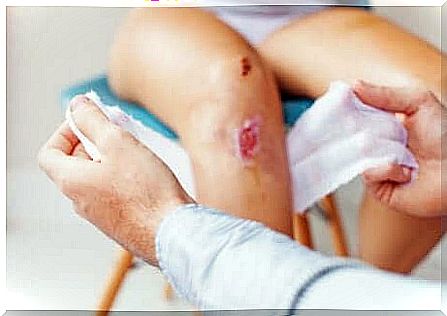
Types of scarring
The stages of skin healing are always the same for all wounds, but not all wounds are the same. This is why we have identified three types of scarring in the world of dermatology and surgery:
First line
This name is given to the process which occurs when the wound is small, is not deep and when there is a coming together between its two edges. It is rare that there is a long-term scar.
Second line
This is the healing process of a deeper wound that has affected the dermis. The result is usually a larger-than-normal scar that looks startling. The main cause is loss of substance or the existence of a very large distance between the edges of the injury. When this happens, the dermis must form a lot of new tissue during the granulation stage, and this explains the final deformity.
Third line
This type of scarring is associated with medical intervention. It occurs when, in a surgical manner, a second suture is made on an already existing first, or when dermal grafts are added to repair. The final scar is guided by the intervention.
Types of scars
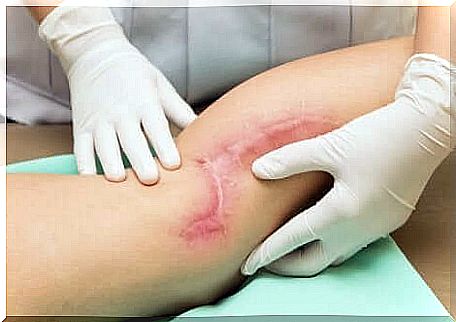
While it is true that there are completely normal and expected scars, there are also pathological scars. Let’s see how they rank for medicine:
- Normal: it is that which appears following the usual process. The end result is a fine line.
- Atrophic: this is the loss of substance in the skin, when there is a small depression in the area where the injury was located. It is a very common presentation of acne, for example.
- Hypertrophic: These are scars caused by types of scarring with excessive collagen production. The skin is then thick and protrudes above the level of the normal epidermis. This usually happens in areas of the skin that are in constant motion, such as the knee.
- Keloid: it is an excessively large hypertrophic scar. It can be itchy and even burn. It usually extends beyond the original limits of the injury that caused it.
- Contracture: this is the name given to scars from burns. The scar tissue contracts, deforming the affected area.
Each of these types of scarring deriving from different forms of scarring has a way of being medically approached. You can see a surgeon or dermatologist if you have a scar that concerns you. The professional will be able to tell you what is the best strategy to adopt in your case.





